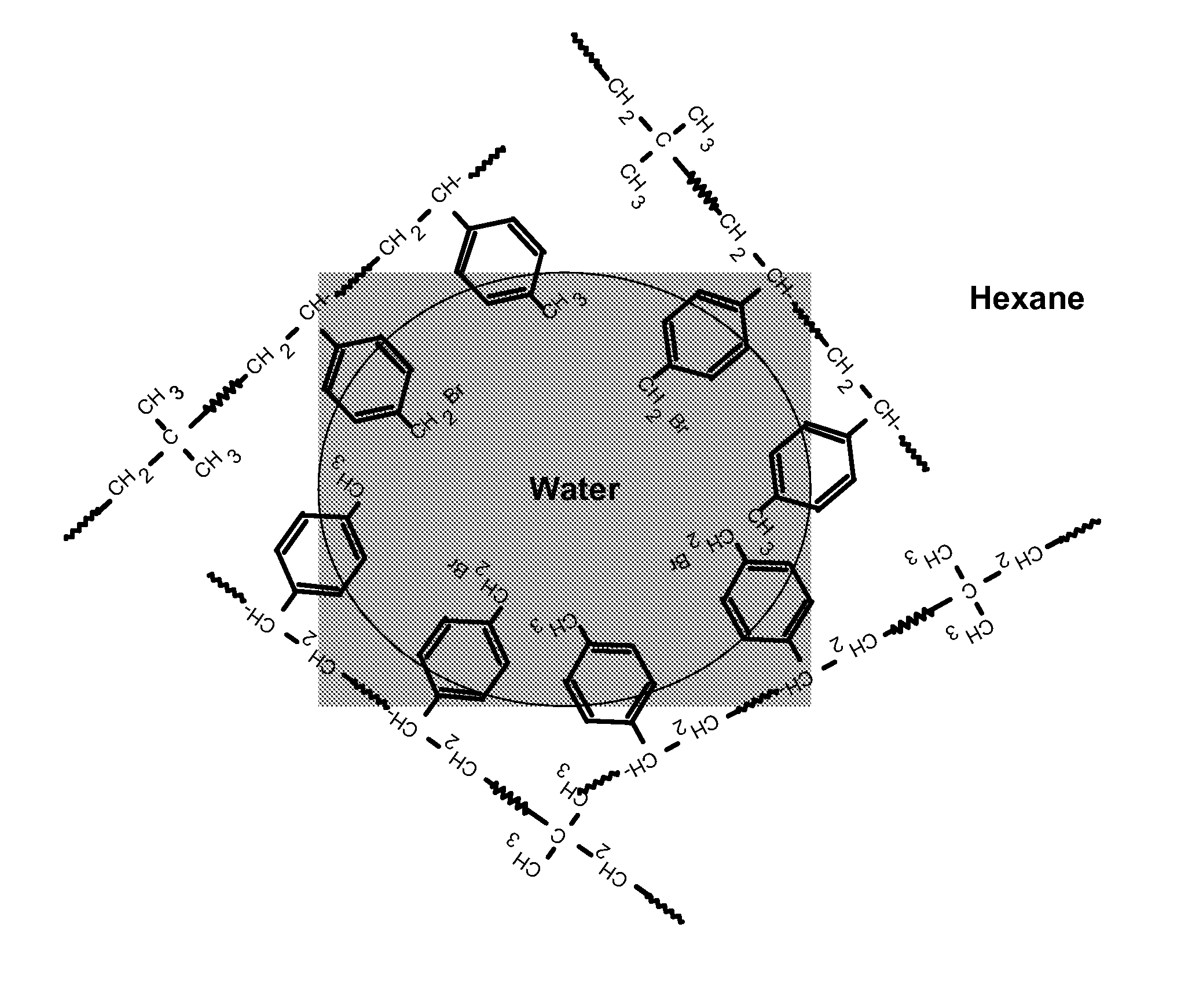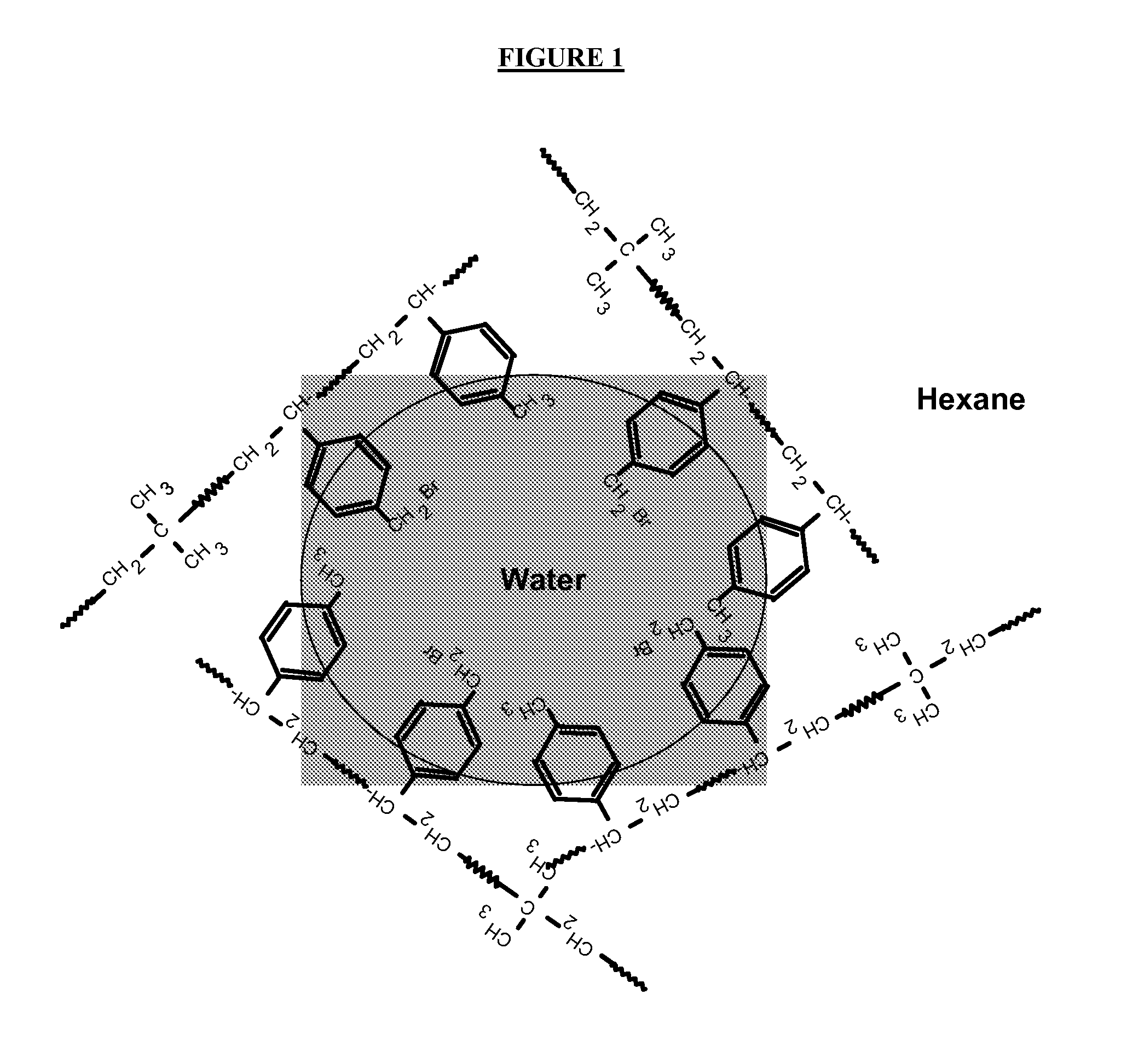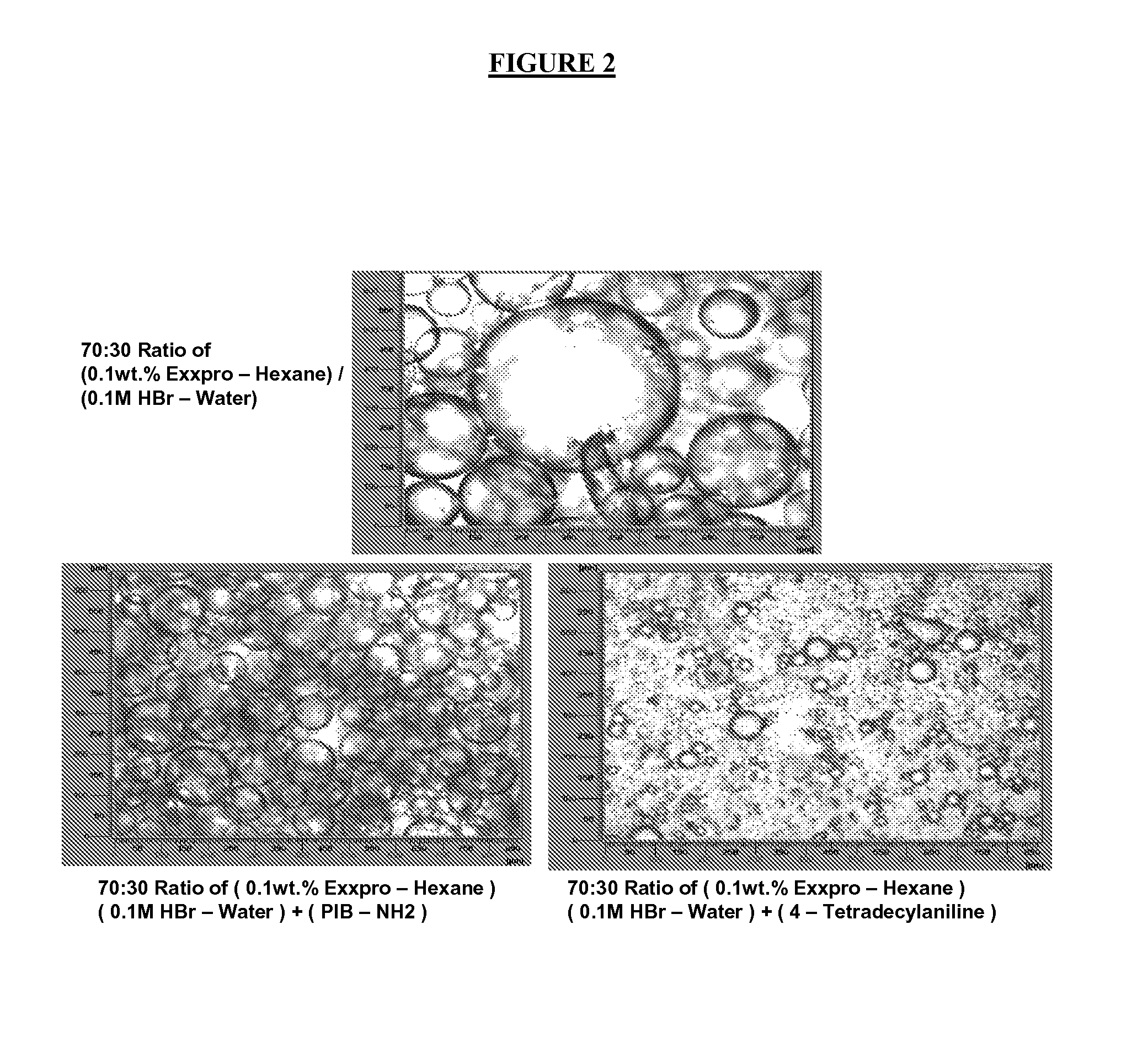Polymer-Clay Nanocomposite and Process for Preparing the Same
a technology of polymerclay and nanocomposite, which is applied in the field of polymerclay nanocomposite and process for preparing the same, can solve the problems of increased hysteresis, poor mechanical properties, and negative impact of released amines and degradation products on the transport properties
- Summary
- Abstract
- Description
- Claims
- Application Information
AI Technical Summary
Benefits of technology
Problems solved by technology
Method used
Image
Examples
examples
Permeability Testing
[0135]For each of the following examples, the nanocomposites formed were analyzed for permeability properties using the following method. In certain embodiments, 36 grams of the nanocomposite material were loaded into a Brabender® mixer at a temperature of 130-145° C. and mixed with 20 grams of carbon black (N660) for 7 minutes. The mixture was further mixed with a curatives package of 0.33 g stearic acid, 0.33 g of ZnO (Kadox 911 obtained from CP Hall, Chicago, Ill.), and 0.33 g MBTS (mercaptobenzothiazole-disulfide) at 40° C. and 40 rpm for 3 minutes. The resulting material was milled, compression molded and cured at 170° C. All specimens were compression molded with slow cooling to provide defect-free pads. A compression and curing press was used for rubber samples. Typical thickness of a compression molded pad was around 15 mil (381 μm). Using an Arbor press, 2-in. (5 cm) diameter disks were then punched out from molded pads for permeability testing. These di...
examples 1 to 8
[0140]MDX 03-1 polymer or polymer cement (see Table 2 below) was dissolved or diluted in iso-hexane (see also Table 2 below). Hydrobromic acid, HBr (48% aqueous solution, Aldrich, see Table 2) was added. 214 g of aqueous slurry of sodium montmorillonite clay (see Table 1) was diluted with 200 mL of deionized water and mixed with PIB-amine solution (as explained in Table 1; for the amounts see Table 2 below) and 50 mL of iso-hexane using a high-shear mixer (Silverson L4RT-W, at 6000 RPM). The resulting emulsion was mixed with acidified polymer solution using the Silverson L4RT-W high-shear mixer at 6000 RPM for 40 minutes. The product was obtained by steam stripping to remove the solvents, and dried in a vacuum oven at 105° C. for 16 hours.
TABLE 2(compositions of Examples 1 to 8):Ex. No.12345678MDX 03-1 polymer100100100100MDX 03-1 polymer cement455455455455iso-hexane (mL)1000100010001000600600600600HBr (mL)1.541.542.462.461.541.542.462.46PIB-amine solution (mL)2.75.42.75.52.75.52.75....
examples 9 to 18
[0143]Polymer (see Table 5 below) was dissolved in 1000 mL iso-hexane. 2.05 mL of hydrobromic acid, HBr (48% aqueous solution, Aldrich) was added. 214 g of aqueous slurry of sodium montmorillonite clay (see Table 1 above) was diluted with 200 mL of deionized water and mixed with PIB-amine solution (as explained in Table 1; for the amounts see Table 5 below) and 50 mL of iso-hexane using a high-shear mixer (Silverson L4RT-W, at 6000 RPM). The resulting emulsion was mixed with acidified polymer solution using the Silverson L4RT-W high-shear mixer at 6000 RPM for 40 minutes. The product was obtained by steam stripping to remove the solvents, and dried in a vacuum oven at 105° C. for 16 hours.
TABLE 5(Compositions of Examples 9 to 18):Ex. No.9101112131415161718Exxpro ™ 3745 (g)100100Exxpro ™ 3433 (g)100100BB 2222 (g)100100100BB 2255 (g)100100100PIB-amine2.24.42.25.51.12.25.51.12.25.5solution (mL)
Clay Retention Measurement and Mooney Viscosity of Examples 9-18
[0144]Inorganic content was m...
PUM
| Property | Measurement | Unit |
|---|---|---|
| Temperature | aaaaa | aaaaa |
| Fraction | aaaaa | aaaaa |
| Fraction | aaaaa | aaaaa |
Abstract
Description
Claims
Application Information
 Login to View More
Login to View More - R&D
- Intellectual Property
- Life Sciences
- Materials
- Tech Scout
- Unparalleled Data Quality
- Higher Quality Content
- 60% Fewer Hallucinations
Browse by: Latest US Patents, China's latest patents, Technical Efficacy Thesaurus, Application Domain, Technology Topic, Popular Technical Reports.
© 2025 PatSnap. All rights reserved.Legal|Privacy policy|Modern Slavery Act Transparency Statement|Sitemap|About US| Contact US: help@patsnap.com



